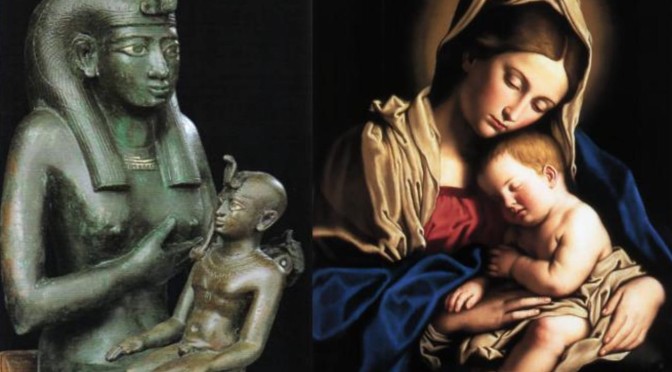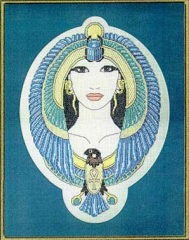 In parallel with the growth of Roman Christianity another faith was growing strongly in the Roman Empire. The godhead in this faith was not a man, but a woman – Isis the God of Egypt. At the time of Jesus’ teaching, Isis had been worshipped in Egypt for well over 4000 years. Isis was well known outside of Egypt. Her temples were found all over the known world.
In parallel with the growth of Roman Christianity another faith was growing strongly in the Roman Empire. The godhead in this faith was not a man, but a woman – Isis the God of Egypt. At the time of Jesus’ teaching, Isis had been worshipped in Egypt for well over 4000 years. Isis was well known outside of Egypt. Her temples were found all over the known world.
In the early years of christianity the Ankh, shown on the chest of the bird was used as a christian symbol, particularly in the celtic nations.
There then followed three hundred years when the Christianity and the worship of Isis continued. Co-existence is perhaps too strong a word to use! Constantine attempted to control conflict this by declaring freedom of religious belief. He was horrified at how quickly beliefs fragmented and became a source of civic disruption. Disturbed by increasing conflict and convinced that the Capital of his Empire should move east to Byzantium, Constantine decided in 310 that the Eastern Version of Christianity should be the Religion of the Empire.
Despite this decision Isis was still venerated in public ceremonies until the 6th century It was as late as 490AD when the worship of Isis was finally stamped out by an ever more powerful Roman Church. A special point was made of establishing churches dedicated to the Virgin Mary in or on the site of temples to Isis.
There is no record of which ministry promoted the cult of Isis during the intervening period, but obviously it was promoted and the promotion lasted for a significant period.
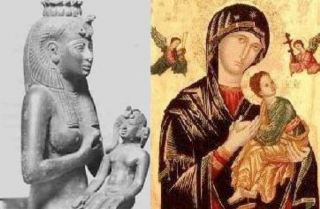 Setting aside images of the Crucifixion, one of the most enduring images of the Christian era has been the image of mother and child.
Setting aside images of the Crucifixion, one of the most enduring images of the Christian era has been the image of mother and child.
The imagery is strikingly similar to the images of Isis is nursing Horus, the first Pharaoh. Despite the similarity it must be emphasized that Isis was not only Horus’ mother but also the godhead of the Egyptian religion, superior all the other gods.
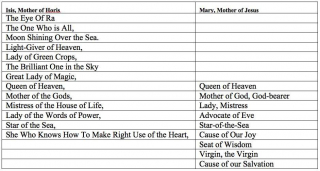 Both Isis mother of Horus and Mary Mother of Jesus had other titles of adoration.
Both Isis mother of Horus and Mary Mother of Jesus had other titles of adoration.
There is a significant overlap. The use of Star of the Sea for both is very surprising, as Jesus mother has no discernable contact with the sea
There is another almost identical image to be found in the Louvre. This statue was apparently previously the property of Henry IV and was probably brought by him from Languedoc when he assumed the Throne of France. This is neither Iris nor Mary but the Empress Messalina holding her son Britannicus.
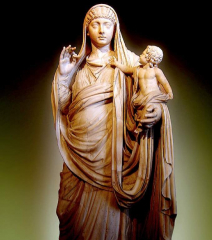 Messalina’s husband and Britannicus’ father was the Emperor Claudius. She lived at a time when there was a great competition between the religion of Isis and Christianity for adherents within the Roman Empire. We can assume that she played an important part in the politics of her time as she was dismissed by later Christian writers as a prostitute. It requires great inventiveness to label an empress as a prostitute. She apparently volunteered to work in a brothel in secret as a hobby!
Messalina’s husband and Britannicus’ father was the Emperor Claudius. She lived at a time when there was a great competition between the religion of Isis and Christianity for adherents within the Roman Empire. We can assume that she played an important part in the politics of her time as she was dismissed by later Christian writers as a prostitute. It requires great inventiveness to label an empress as a prostitute. She apparently volunteered to work in a brothel in secret as a hobby!
